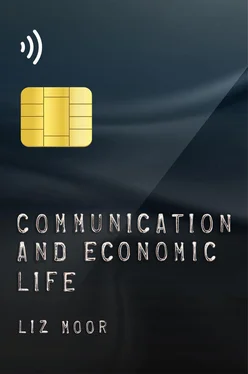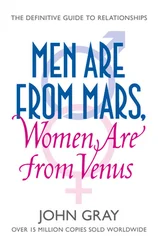To claim that economic life involves multiple competing value systems is also to invoke a tradition, linked to Polanyi, which suggests that even under highly developed market systems, attempts to fully disembed economic actions from their social contexts are likely to fail, and indeed to lead to various kinds of ‘counter-actions’ (Polanyi 2001 [1944]). Thus, a variety of substantive values, including those antithetical to capitalism or markets, may co-exist alongside a dominant market or capitalist logic that many claim has wiped them out (see also Parry and Bloch 1989; Gibson-Graham 1996, 2006). From this perspective, looking at communication in contemporary economic life cannot simply mean analysing those symbolic forms that most clearly embody or propagate the market logics that dominate, but also those that criticize them or present alternatives.
This value plurality can be seen in what follows in various ways. On the one hand, the book uses mainly British and American examples. As such, it is describing market societies where most goods and services are exchanged via the market, but also capitalist societies where production is for profit, and wealth and productive assets are privately held. This affects the content and argument of the book in important ways. For example, chapters 3and 4detail many instances where capitalist profit motives decisively shape the communication environment and where debate is not about whether but about how much capitalism distorts communication or interferes with the availability of information. On the other hand, market societies do not only consist of market-based forms of exchange, and capitalist economies typically include – and even depend upon – non-capitalist institutions and alternative forms of transaction and provisioning (Gibson-Graham 1996, 2006; Slater and Tonkiss 2001). Thus, there are other economic logics and practices at work even in the heart of advanced capitalist systems. Some of these alternative logics and practices can be seen in the examples of online exchange and communication, and new forms of digital currency, discussed in chapter 4, while the fictional narratives discussed in chapter 5give some sense of the alternative philosophies of economic life that circulate even within societies apparently dominated by the profit motive.
Taken together, the book suggests that the symbolic resources made available to us by media and communicative practices of various kinds do not only affirm some ascendant ‘economistic’ logic, capitalist or neoliberal; very often, they also provide the tools to resist or to challenge such frameworks. Just as the term ‘economy’ itself emerges differently in different sites and communicative practices, so the rules and norms governing acceptable and appropriate behaviour around money vary according to social context. While many societies, including the UK and US, have for some time been governed according to a logic that prioritizes markets and ideals of competitiveness, individual responsibility, entrepreneurialism and so forth, these societies also very often contain within them alternative traditions of thought, based on different values and moral systems. And these alternative ways of thinking about the economy tend to make themselves felt above all in the communicative and symbolic repertoires of those cultures. If we are to be optimistic about the possibility of economic change, it will be necessary to attend to these alternative ways of thinking.
The book is divided into two parts. Part Iconsiders the role of communication in economic life by exploring how economic actions, behaviours and practices can themselves be seen as communicative. In chapter 1, I explore how this idea has been developed in economic theory. Although economics seems to have little to say about communication, it actually has two quite distinctive perspectives. The first is the belief – seen in Adam Smith and much subsequent work – that economic actions are (non-verbal) forms of communication that can be observed as part of the market process. The second is the idea that ‘communication’ consists primarily in the acquisition or transfer of information. This idea has its roots in Hayek’s work on price, and is then further developed in information economics and parts of game theory. The chapter traces the evolution of these views, before considering whether the discipline’s approach to communication might be shifting in line with the rise of a more empirical trend in microeconomics.
Chapter 2explores the same idea – that economic action is communicative – but through the lens of everyday practice. Treating communication as a form of symbolic interaction, it focuses on money, payments and price and shows that these have long functioned as ‘media’ for the communication of various feelings, affiliations and solidarities. This history is traced through strands of social scientific work, which help to explain why changes in these aspects of our economic lives are so consequential. In particular, monetary media hark back to the longstanding association between ‘communication’ and ‘communion’; the changes associated with the decline of cash, the rise of alternative currencies or the emergence of dynamic pricing all revive longstanding tensions between money’s power to generate collectivity (‘communion’) and its power to divide and exclude.
Part IIshifts the focus of the book to explore how different types of discourse, and different communicative types, contribute to the structuring of economic life. In these chapters I adopt a broadly pragmatist approach to communication, focusing on the way that people or institutions attempt to ‘do things with words’ (Austin 1975). The forms of communication I consider – promotion, information, narrative and discussion – correspond loosely to different rhetorical modes or styles, although they are of course not exhaustive, and certainly not mutually exclusive.
Chapter 3considers the role of promotion in shaping economic life. Promotion is typically associated with consumer culture and the matching of supply and demand, but the chapter shows that its role in our economic lives is much more wide-ranging. ‘Promotional’ communication is now a required element of many occupations other than retail (extending even to academics), and can be found in political speeches about the economy, central bank communications, and even economic theory. The chapter explores this extended scope of promotion, and shows, in the second half of the chapter, that the media of promotion are also often not quite what we think: contemporary promotion does not just flow through ‘big’ media and media institutions, but also through materials such as buildings, retail sites, credit cards and the behaviours and bodies of shop assistants. The chapter also considers the consequences of the fact that much promotional communication is either deliberately hidden or intended to sink into the unnoticed background of everyday life.
Chapter 4addresses a quite different communicative practice: ‘informing’. As a mode of discourse, informing is supposed to be open and uncoercive (Peters 1999). Similarly, the free flow of information – and its equal availability to all – is supposed to be central to the efficient functioning of markets as well as democracies (Schudson 2015). In this chapter I focus on the consequences of information abundance for online economies, and show that communication-as-information in fact constructs economic life in highly variable ways. On the one hand, both consumers and small businesses are advantaged by new types and volumes of information: it is easier to find information about goods and competitors; there are more opportunities for consumer ‘voice’ as well as ‘exit’; private aspects of our economic lives can be discussed in ways that are often highly beneficial; and exchange can sometimes be ‘re-personalized’ (Hart 2001). In many ways, information in our economic lives is a force for value plurality. At the same time, information is increasingly central to practices of concentration and control. Information about consumers is collected behind their backs automatically or semi-automatically, and is then sold and/or used to classify them in unknown but often highly consequential ways. ‘Informing’, in other words, is increasingly hidden from view and data is concentrated in the hands of a relatively small number of intermediaries who know how to interpret and deploy it. The chapter traces these developments before focusing in particular on the use of consumer information in digital marketing and online pricing.
Читать дальше











![John Bruce - The Lettsomian Lectures on Diseases and Disorders of the Heart and Arteries in Middle and Advanced Life [1900-1901]](/books/749387/john-bruce-the-lettsomian-lectures-on-diseases-and-disorders-of-the-heart-and-arteries-in-middle-and-advanced-life-1900-1901-thumb.webp)